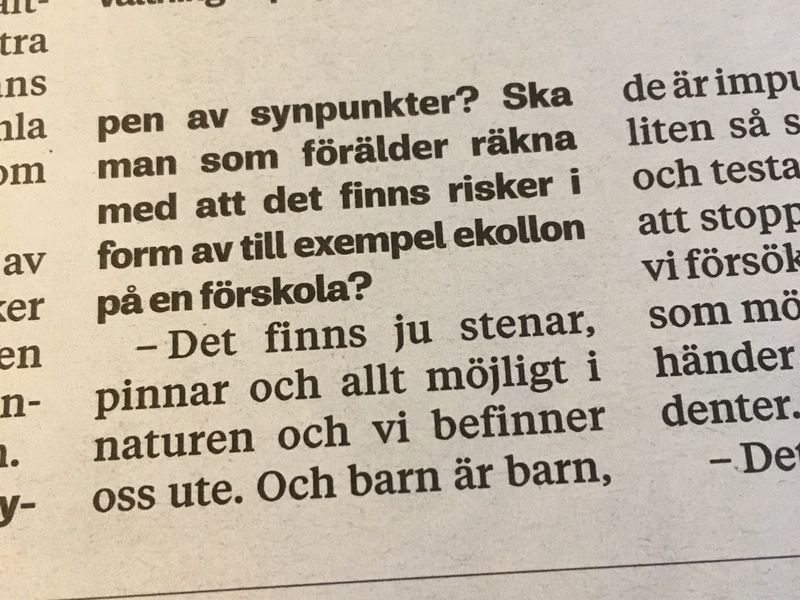Prepare your child for the path, not the path for your child.
Lenore Skenazy & Jonathan Haidt gör en del intressanta observatiner i en artikel i Reason.
Temat:
We've had the best of intentions, of course. But efforts to protect our children may be backfiring.
Som så ofta i artiklar av detta slag är bevisen mestadels anekdotiska, men visst blir man förundrad och lite nyfiken av dessa tre exempel:
You may remember the story of the Meitivs in Maryland, investigated twice for letting their kids, 10 and 6, walk home together from the park. Or the Debra Harrell case in South Carolina, where a mom was thrown in jail for allowing her 9-year-old to play at the sprinkler playground while she worked at McDonald's. Or the 8-year-old Ohio boy who was supposed to get on the bus to Sunday school, but snuck off to the Family Dollar store instead. His dad was arrested for child endangerment.
Så här beskrivs bakgrunden:
Beginning in the 1980s, American childhood changed. For a variety of reasons—including shifts in parenting norms, new academic expectations, increased regulation, technological advances, and especially a heightened fear of abduction (missing kids on milk cartons made it feel as if this exceedingly rare crime was rampant)—children largely lost the experience of having large swaths of unsupervised time to play, explore, and resolve conflicts on their own.
Exemplet med kidnappning styrks också av statistik:
A 2010 study found "kidnapping" to be the top parental fear, despite the fact that merely being a passenger in a car is far more dangerous. Nine kids were kidnapped and murdered by strangers in 2011, while 1,140 died in vehicles that same year.
Allt sammantaget kanske det inte var någon jättebra idé att söka efter saknade barn på mjölkförpackningar (här är en halvbra artikel i The Atlantic om detta)


comments powered by Disqus